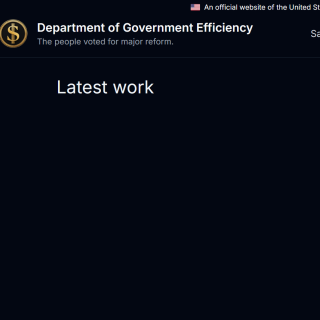Advertisement
When the basement flooded again, the Taylors didn’t panic. They filmed it. They emailed Beacon Property Management—again. The water damage wasn’t new. Neither was the silence.
For months, Zakee Taylor and his family had been trying to work with their landlord to resolve outstanding issues at their rental in Northeast Columbus: mold from a previous flood, broken fixtures, a faulty bathroom fan, and rising late fees due to the income cycle of the life of a small business owner entrepreneur. The Taylors are not “problem tenants.” They are deeply embedded in the city they’re being pushed out of. Their company, Taylor Branding Co., has operated in Columbus for more than two decades.
What they asked for wasn’t extreme—access to their online tenant portal, a structured payment plan, and time to vacate the property after their son’s high school graduation. They even had the rent money saved.
But their account was locked. Because Beacon filed for eviction. It wasn’t a miscommunication. It was the model.
This isn’t about one family. This is about what happens when profit meets poverty, meets policy, meets silence. Eviction is not a symptom. It’s a strategy.
The Legal System is not broken—It’s built this way
In Ohio, eviction law overwhelmingly favors landlords. Under Ohio Revised Code 5321, landlords may initiate eviction after giving only three days’ notice to vacate, without legal obligation to: Accept partial payments once an eviction is filed. Offer mediation or a payment plan. Resolve maintenance issues before pursuing removal.
In Franklin County, 25,329 eviction cases were filed in 2024, a 6 percent jump from the previous year. Most are filed by large landlords—many of them corporate—who cycle through court to maintain control over tenants and rental flows.
There is no legal right to counsel unless tenants qualify for select income-based city programs. No requirement to prove repairs were made. No limit on late fee accrual. And no mandated mediation.
It is, quite literally, eviction by design.
Eviction as a business tool
In an email obtained by Free Press and Kin+, Beacon Property Management’s operations manager, Trina Mattox, admitted the true logic behind the Taylors’ eviction.
“I cannot unlock the account because an eviction has been filed. Unless full balance is paid, the eviction will move forward,” said Mattox.
But she went further.
“We filed because we know if you’re in the eviction process, IMPACT or another assistance program may be able to help you,” she said.
This wasn’t a last resort. It was a tactic.
Beacon filed, knowing the Taylors didn’t meet sustainability requirements for rental aid.
According to a Franklin County Prevention, Retention and Contingency (PRC) case manager, which provides short-term benefits and services to low-income families facing an emergency, their most recent application for assistance had already been denied.
Yet Beacon went ahead with eviction—not to remove a non-paying tenant, but to push them into qualifying for public assistance. It’s eviction as access to subsidy, at the tenant’s emotional and legal expense.
“We may need to file an eviction to get assistance through IMPACT,” said Mattox.
IMPACT Community Action is one of Columbus’ primary emergency rental assistance providers. When reached for comment about this practice and their role in landlord-tenant mediation, IMPACT did not respond.
But Beacon’s message reveals something deeper: eviction isn’t just a final measure—it’s a strategic trigger. Landlords are weaponizing court filings to shift financial responsibility from themselves to overburdened public programs.
Zakee Taylor summed it up plainly: “We weren’t asking for a bailout. We had the money. They just wouldn’t work with us unless we went through court or charity.”
What’s often missed in cases like this is who’s really pulling the strings. While Beacon is the property manager, the actual owner of the Taylors’ home is Brand Realty, a private investment entity. Emails show the Taylors repeatedly referencing their desire to “pay Brand Realty (via proxy: Beacon),” acknowledging that the decisions impacting their housing stability were ultimately tied to an absentee owner with no direct communication or accountability.
This structure—where corporate managers file, and private landlords collect—makes it almost impossible to hold anyone fully responsible.
It also raises deeper questions: Who profits when public aid is triggered by eviction filings? And who gets to stay invisible while tenants absorb the trauma?
A pattern, not an exception
Beacon is not alone. Just 70 miles west in Dayton, VineBrook Homes, a national corporate landlord with properties across Columbus, has been accused of the same practices—high eviction filings, poor maintenance, and predatory fees.
In Cincinnati’s Hamilton County, VineBrook filed over 1,450 evictions in four years, drawing a 2023 lawsuit from the city itself, which labeled the company a “public nuisance.”
Across Ohio, these companies aren’t exploiting legal loopholes. They’re executing standard operating procedure.
A timeline of neglect
Over 18 months, the Taylors documented a series of unresolved maintenance issues—each one a clear violation of the city’s housing code, yet none enough to halt eviction:
- January 2024 – Broken closet doors reported, never fixed.
- October 2024 – First basement flood; no follow-up from Beacon.
- March 2025 – Inoperable bathroom fan, mold odor, faulty faucet installation; maintenance scheduled and then ghosted.
- April 2025 – Second basement flood. Still no repairs.
Despite this record—and despite Columbus’ “Housing for All” program’s increased rental registry enforcement—none of these issues stopped Beacon from locking the Taylors out of their account or filing for eviction. Instead, the family was left to document and make their own repairs while bracing for displacement.
Columbus passed “Housing for All” in 2021. But who is it for?
When the Columbus City Council passed the initial pieces of the Housing for All legislation package, it was billed as a bold, sweeping effort to curb displacement, protect renters, and rebalance power in a city where eviction had become routine and landlord accountability rare.
The initiative, championed by then-City Councilmember Shayla Favor (now Franklin County Prosecutor) was introduced with the language of rights, not regulation.
“We named it ‘Housing for All’ because at Columbus City Council, we believe housing is a human right. Period,” Favor said at the launch.
But three years later, that right still hinges on whether your landlord feels like honoring it.
The Housing for All’s legal backbone was meant to give renters tools to survive a predatory market.
The reforms included:
- 60-day rent hike notification. Landlords must give 60 days’ notice for any rent increase over 5 percent, aimed at preventing sudden, destabilizing hikes. But landlords like Beacon aren’t hiking—they’re evicting.
- Right to Counsel for low-income tenants. Through new city funding, low-income renters now have access to legal representation in eviction court. But families like the Taylors—above the poverty line but still economically vulnerable—are left to navigate court alone.
- Strengthened rental registry. Landlords must register non-owner-occupied properties, disclose ownership, and comply with regular code enforcement. But Beacon filed eviction against the Taylors while outstanding maintenance issues—flooding, broken plumbing—remained unresolved. Code compliance did not stop the filing.
- Renter’s choice law (Ordinance 0495-2021). Landlords with five or more units must let tenants choose how they pay security deposits—upfront, or in 3- or 6-month installments. But for tenants already in a lease and under pressure from late fees and locked accounts, this choice is irrelevant.
- Source of income protection. Landlords cannot discriminate against tenants based on how they pay rent—whether it’s wages, housing vouchers, or Social Security. Yet, landlords like Beacon admit to filing evictions precisely to make tenants eligible for nonprofit assistance.
- “Pay to Stay” ordinance. Tenants now have the right to avoid eviction by paying all owed rent and fees before judgment is issued. But if late fees push a family over the line—and if the landlord refuses partial payments—they can still be dragged into court. Like the Taylors.
- Acceptance of third-party payments. Landlords must now accept rent payments from third parties—such as nonprofits or family members. But if the account is locked, as Beacon did to the Taylors, third-party help is irrelevant without landlord cooperation.
- Legal rent receipts requirement. Landlords are now required to provide documented proof of rent payment. A win on paper. But when landlords refuse to unlock accounts, that paper trail vanishes.
- Anti-Retaliation protections. The city passed laws to protect tenants from being evicted for reporting violations or joining tenant unions. But retaliation by bureaucracy—like delayed repairs, blocked portals, or communication blackouts—remains unchecked.
- Homeowner and Neighborhood stability measures. The city also expanded grants for home repair, explored ADUs (accessory dwelling units), and piloted a foreclosure and vacant property registry. But these measures largely bypass renters like the Taylors.
The problem isn’t the vision. It’s the gap between policy and power
Columbus’ Housing for All package includes some of the strongest tenant protection laws in Ohio’s history. But even those laws don’t force landlords to: Offer payment plans, freeze late fees, mediate before court, fulfill basic repairs before eviction, unblock access to payment portals, and engage tenants in good faith.
In the Taylors’ case, Beacon filed an eviction despite the tenants’ offer to pay the full back rent (minus ballooned late fees), their documented requests for repairs, a formal notice of intent to vacate after their son’s high school graduation, a willingness to continue maintaining the property in the meantime, and a proposal to pay full balance once their tax return cleared.
They didn’t qualify for legal aid. Their account was locked. Their emails went unanswered. And ultimately, Beacon told them point-blank that eviction was filed not because of refusal to pay—but because filing would unlock access to public assistance.
So, the public covers the cost. The courts enforce the filing. The nonprofit scrambles to help.
And the landlord walks away whole.
What Columbus needs next
The Housing for All framework is a foundation. But without stronger enforcement, clearer protections for middle-income renters, and accountability for eviction-based rent collection, it remains a promise, not a shield.
If Columbus wants to live up to the name “Housing for All,” it needs to: Mandate pre-filing mediation. Cap compounding late fees. Penalize serial eviction filers. Publish a public registry of landlords and their eviction histories
And protect tenants who can pay—but are blocked, stalled, and bled dry by policy gaps.
Ohio law allows this. Columbus tolerates it. Beacon benefits
What happened to the Taylors is not an outlier—it’s a case study. A landlord files for eviction knowing public resources will intervene. A nonprofit like IMPACT is left to clean up the financial mess. Tenants willing to pay—but unable to pay everything plus fees instantly—are locked out and punished and forced to live with the stigma and public record of being evicted.
The law enables it. The courts expedite it. The city lacks the tools to stop it. In a country where rent is the single largest expense for working-class families, the idea that eviction must be triggered to get help should ring every alarm.
“We didn’t fail. The system did. We asked for a plan. They gave us court dates,” said Zakee Taylor.
Beacon may be the name on the eviction filing—but the benefit flows upstream. Brand Realty remains untouched, unnamed in court, and insulated from community scrutiny, even as public programs and private trauma pay their rent. That’s the architecture of housing injustice in Columbus: corporate enforcers in the front, private investors in the shadows, and tenants caught in the middle.
The Final Word
The basement may have dried. But the damage lingers. On Beacon’s ledger, the Taylors are a line item. On their record, this eviction—if finalized—will be a scar. What Beacon is doing is legal. What VineBrook is doing is scalable. What the Taylors are doing is resisting.
And until the law changes, Ohio will remain a battleground—where dignity is priced, and displacement is the business model.
----------------------
Journalist’s Note: Beacon Property Management and Brand Realty Inc. and VineBrook Homes did not respond to multiple requests for comment. The Taylors have given permission for their story to be told, with identifying information about their property omitted for privacy.



